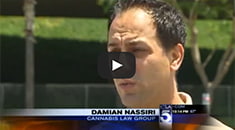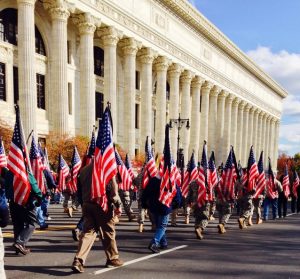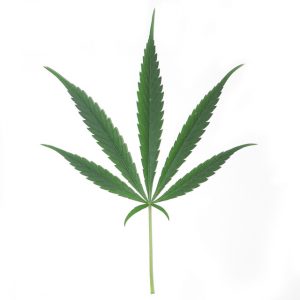The NFL, as with so many other professional and minor league sports teams, still ascribes to official federal line on marijuana, which is that as a Schedule I narcotic, it is highly addictive, dangerous and has no medicinal value. Of course, our cannabis lawyers in L.A. know that runs counter to the evidence and what dozens of states have thus far concluded. Given that NFL players are some of the most tenacious athletes – and take the hardest hits – they more than most might benefit from medicinal marijuana as an alternative to powerful and highly addictive opioid painkillers. But until the organization changes its stance, we’ll continue to have conflicts such as those seen with free agent Mike James.
James, a running back, injured his ankle during a football game in 2013. According to a CNN report, he was prescribed opioid painkillers. In short order (as so often happens) he became dependent on the pills. He became aware that an addiction was forming and wanted something safer to ease the pain.
After some research, he concluded marijuana was truly the best option – to ease the pain, end his addiction and maintain his physical prowess. James had some reservations about this decision, witnessing the way drug addiction in general harmed his family and his childhood communities. But, like a majority of Americans, he soon learned that cannabis does not belong in the same category as other street drugs at all, and decided to take the leap.
The NFL, unfortunately still takes a hard-line stance with marijuana use by players, who are drug-tested regularly. (Yet League officials see no problem whatsoever with players consuming dangerous opioid pain relievers.) CNN points to to a study from Drug and Alcohol Dependence, in which over half of ex-NFL players surveyed said they used opioids, with 71 percent of them admitting they misused them. Support for prescription painkillers continues, despite many leaders – President Trump included – have declared opioid addiction an epidemic. When it comes to medical marijuana, though, which can be a safe, effective, and non-habit forming treatment under proper medical guidance, this is where NFL leaders choose their line in the sand.
Continue reading

 Cannabis Law Group's Medical Marijuana Legal Blog
Cannabis Law Group's Medical Marijuana Legal Blog






 numbers as a result of the blossoming cannabis economy. According to
numbers as a result of the blossoming cannabis economy. According to  veterans are using medical marijuana. This is in spite of the fact that the department does not allow its doctors to recommend marijuana. The department cites
veterans are using medical marijuana. This is in spite of the fact that the department does not allow its doctors to recommend marijuana. The department cites  country where, despite mounting evidence, the federal government is stubbornly standing by marijuana’s classification as a Schedule I narcotic, it’s discouraging to see facts seemingly ignored. It’s no wonder, then, people would take the opposite extreme stance to combat. A report from
country where, despite mounting evidence, the federal government is stubbornly standing by marijuana’s classification as a Schedule I narcotic, it’s discouraging to see facts seemingly ignored. It’s no wonder, then, people would take the opposite extreme stance to combat. A report from  Oklahoma recently became the 30th state to approve some form of medical marijuana, a significant step in proving cannabis support is a non-partisan issue and that old-school propaganda tricks aren’t working to scare an informed electorate anymore.
Oklahoma recently became the 30th state to approve some form of medical marijuana, a significant step in proving cannabis support is a non-partisan issue and that old-school propaganda tricks aren’t working to scare an informed electorate anymore. Americans not only support cannabis in theory, but also in practice.
Americans not only support cannabis in theory, but also in practice. 
 the Rohrabacher-Blumenauer amendment slide through, thus continuing protections of state-compliant medical marijuana operations. While seemingly small, this was a pretty significant victory for those who depend on medical marijuana, whether as a patient or cannabis business owner. Marijuana users have been somewhat nervous since the change in administration, particularly with U.S. Attorney General Jeff Sessions openly making it his mission to eradicate all advancements in the marijuana industry.
the Rohrabacher-Blumenauer amendment slide through, thus continuing protections of state-compliant medical marijuana operations. While seemingly small, this was a pretty significant victory for those who depend on medical marijuana, whether as a patient or cannabis business owner. Marijuana users have been somewhat nervous since the change in administration, particularly with U.S. Attorney General Jeff Sessions openly making it his mission to eradicate all advancements in the marijuana industry. to the
to the